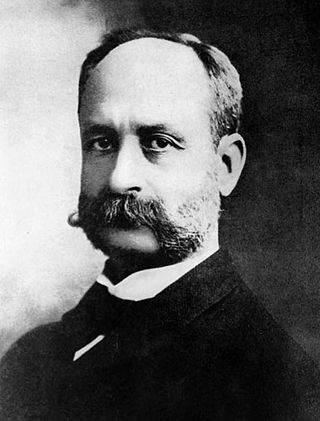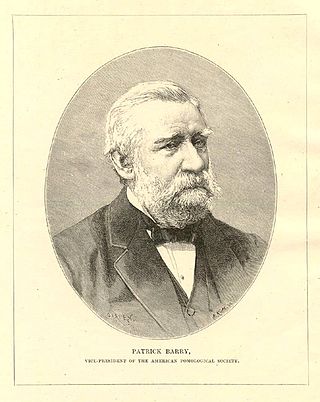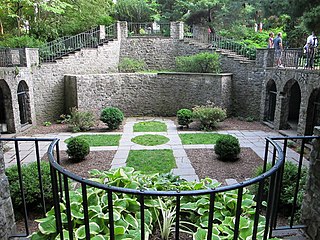
This article documents the history of Rochester, New York, in western New York State. Settlement began in the late 18th century, and the city flourished with the opening of the Erie Canal. It became a major manufacturing center, and attracted many Italians, Germans, Irish and other immigrants, as well as a dominant group of Yankees of New England origin. The Yankees made Rochester the center of multiple reform movements, such as abolitionism and women's rights. It was famous as the center of the American photography industry, with headquarters of Eastman Kodak. In the 1970s it became fashionable to call the industrial cities along the Great Lakes 'rustbelt cities' following the move away from steel, chemical and other hard goods manufacturing. Rochester, with the presence of Ritter-Pfaulder, Bausch and Lomb, Eastman Kodak, Xerox, Gannett and other major industries, defied the trend for many decades following WWII.

Rafael Guastavino Moreno was a Spanish building engineer and builder who immigrated to the United States in 1881; his career for the next three decades was based in New York City.

Patrick Barry, was a pioneer horticulturist, owner of the then-largest nursery in the United States, and noted author on the subject of horticulture.

Voorhees Mall is a large grassy area with stately shade trees on a block of about 28 acres (0.11 km²) located on the College Avenue Campus of Rutgers University near downtown New Brunswick, New Jersey. An eclectic mix of architectural styles, Voorhees Mall is lined by many historic academic buildings. The block is bound by Hamilton Street, George Street (north), College Avenue (south) and Seminary Place (west). At the mall's western end, across Seminary Place, is the campus of the New Brunswick Theological Seminary, whose history is intertwined with the early history of Rutgers University. Across Hamilton Street is the block called Old Queens, the seat of the university.
George Ellwanger was an American horticulture scientist.

The First Universalist Church is a historic Universalist church building located at 150 S. Clinton Ave. in Rochester, New York. Construction began in September 1907 and was dedicated in October 1908. First Universalist Church is affiliated with the Unitarian Universalist Association and is one of two Unitarian Universalist congregations in Monroe County, New York; the other being the First Unitarian Church of Rochester.

The Federal Building, U.S. Post Office and Courthouse in Hilo, Hawaii is a former courthouse of the United States District Court for the District of Hawaii. Completed in 1917 and expanded in the 1930s, the building was listed in the National Register of Historic Places in 1974.

The Jose V. Toledo Federal Building and United States Courthouse is a historic post office and courthouse located at Old San Juan, Puerto Rico. It is a courthouse for the United States District Court for the District of Puerto Rico. It is also the site for oral argument before the United States Court of Appeals for the First Circuit, when that court sits in Puerto Rico.
Andrew Jackson Warner, also known as A. J. Warner, was a prominent architect in Rochester, New York.

St. Joseph Roman Catholic Church and Rectory was a historic Roman Catholic church and rectory located at 108 Franklin Street, Rochester in Monroe County, New York. The complex was listed on the National Register of Historic Places in 1975. The structure's shell has been preserved as monument after a disastrous fire.

Lehigh Valley Railroad Station is a historic railway station located at Rochester in Monroe County, New York. The Lehigh Valley Railroad built the station in 1905 but stopped using the station for passenger service in the 1950s. Later the station was used as a bus terminal and then as a night club. In the 1980s the building was added to the National Register of Historic Places and today it houses the Dinosaur Bar-B-Que restaurant.

Mt. Hope–Highland Historic District is a national historic district located at Rochester in Monroe County, New York. The district was the exclusive domain of the Ellwanger and Barry Botanic Gardens and Mt. Hope Cemetery throughout the mid- and late-19th century. It retains its elegant and spacious character of park land. The district is punctuated with notable architect-designed buildings combined with more tightly knit early 20th century subdivision along the district's fringes. Among the notable buildings are the Warner Castle (1854), a 22-room mansion that is home to the Rochester Garden Center. The Mt. Hope Cemetery includes a little Gothic chapel designed by Andrew Jackson Warner.

The Wailuku Civic Center Historic District is a group of four historic buildings and one non-contributing property in Wailuku, Maui Hawaii that currently house the governmental offices of both the County of Maui and the State of Hawaii. The historic buildings were built during a time span from 1901 to 1931. They incorporate several architectural styles and two of the four historic buildings were designed and built by Hawaii-based architect C.W. Dickey. The non-contributing property houses most of the County of Maui's main offices.

The Emory Place Historic District is a historic district in Knoxville, Tennessee, United States, located just north of the city's downtown area. The district consists of several commercial, residential, religious, and public buildings that developed around a late nineteenth century train and trolley station. The district includes the Knoxville High School building, St. John's Lutheran Church, First Christian Church, and some of the few surviving rowhouses in Knoxville. The district was listed on the National Register of Historic Places in 1994.

Linden–South Historic District is a national historic district located in the South Wedge neighborhood of Rochester in Monroe County, New York. The district consists of 136 contributing buildings, including 82 residential buildings, 53 outbuildings, and one church. The houses were constructed between 1872 and 1913 in a variety of vernacular interpretations of popular architectural styles including Gothic Revival, Italianate, Queen Anne, and Colonial Revival styles. The houses are 2 1/2-stories, are of frame or brick construction, and were designed by local architects employed by the developer Ellwanger & Barry. Among the more prominent are Andrew Jackson Warner and Claude Bragdon. The church is the former South Avenue Baptist Church, now Holy Spirit Greek Orthodox Church, built in 1909–1910 in a Late Gothic Revival style. Also in the district is a three-story, Queen Anne style mixed use building, with commercial space on the first floor and residential units above, located at 785 South Avenue.

The Barry County Courthouse is a government building located at 220 West State Street in Hastings, Michigan. It was designated a Michigan State Historic Site in 1969 and listed on the National Register of Historic Places in 1981.

The Arizona Inn is a hotel in Tucson, Arizona. It was built in 1930–31 by Isabella Greenway, who became Arizona's first female representative to the U.S. Congress in 1932. The Spanish Colonial Revival main building was designed by Tucson architect Merritt Starkweather. The entire 14-acre (5.7 ha) complex comprises 25 structures, of which 21 contribute to the historic district. The buildings are pink stuccoed masonry structures with blue details, arranged in landscaped gardens with more pink stucco walls. The gardens were designed by landscape architect James Oliphant. Small structures surround the gardens, which are mainly landscaped with native Arizona plants.

The New Center Commercial Historic District is a commercial historic district located on Woodward Avenue between Baltimore Street and Grand Boulevard in Detroit, Michigan. It was listed on the National Register of Historic Places in 2016.

Starkweather School is an educational building located at 550 North Holbrook Street in Plymouth, Michigan. It was listed on the National Register of Historic Places in 2016. It is the only school from its time still extant in Plymouth, and the only school in Plymouth designed by Malcomson and Higginbotham, who designed numerous schools for the Detroit school district.

McKinley Elementary School is a former school building located at 640 Plum Street in Wyandotte, Michigan. It was listed on the National Register of Historic Places in 2017.























